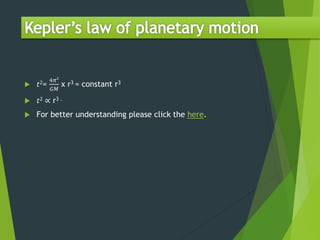This document provides an overview of key concepts in gravitation including: the definition of gravitation; Newton's law of universal gravitation; acceleration due to gravity and how it varies with height and depth; escape velocity; orbital velocity; gravitational potential; time period of satellites; Kepler's laws of planetary motion; and types of satellites. Key points covered include how gravity decreases with height but increases with depth below the Earth's surface, and definitions of geostationary, polar, and binding energy as they relate to satellites orbiting the Earth.
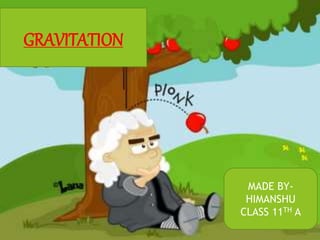

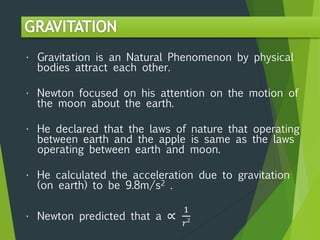

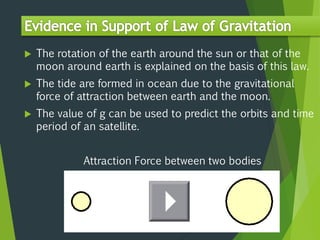




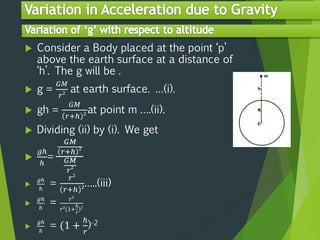






![ W = -GMm [
1
𝑅
-
1
∞
]
U = -
𝐺𝑀𝑚
𝑟
Gravitational Potential
Amount of work done in bringing a body of unit mass from infinity to the given
point
Gravitational Potential = -
𝐺𝑀
𝑟](https://image.slidesharecdn.com/gravitationppt-180122143106/85/GRAVITATION-CLASS-11TH-17-320.jpg)
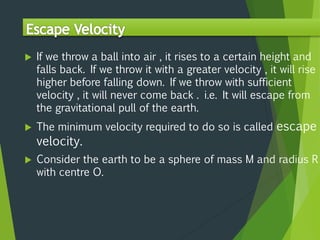


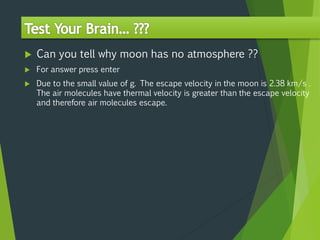


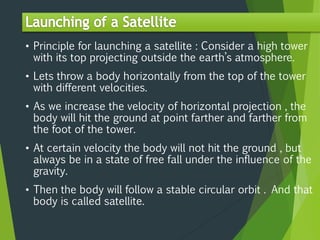





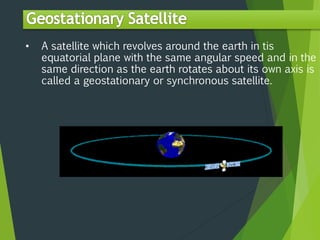

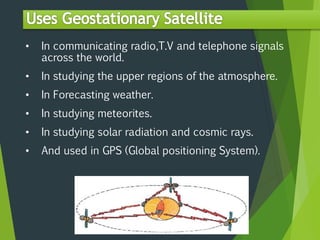





![ Proof :
𝜏 = 𝑟→ x 𝐹→ = 0 [ opp. Faced]
𝜏 =
𝑑𝐿→
𝑑𝑡
= 0.
Or 𝐿→ = constant .
∆𝐴
→
= 𝐴𝑟𝑒𝑎 𝑜𝑓 𝑡ℎ𝑒 𝑡𝑟𝑖𝑎𝑛𝑔𝑙𝑒
∆𝐴
→
=
1
2
𝑟→
x 𝑃→
P (∆𝐴
→
= Area)
𝑃→
P = ∆ 𝑟→
= 𝑣→
∆t =
𝑃→
𝑚
∆t
𝑣→
sun
𝑟→ 𝐹→
∆𝐴
𝑣→
planet
P’](https://image.slidesharecdn.com/gravitationppt-180122143106/85/GRAVITATION-CLASS-11TH-38-320.jpg)
![ ∆𝐴
→
=
1
2
𝑟→ x
𝑃→
𝑚
∆t
∆𝐴
→
∆t
=
1
2
𝑟→ x
𝑃→
𝑚
∆𝐴
→
∆t
=
1
2𝑚
(𝑟→
x 𝑃→
)
∆𝐴
→
∆t
=
𝐿
→
2𝑚
∆𝐴
→
∆t
= constant [L and m are constant]](https://image.slidesharecdn.com/gravitationppt-180122143106/85/GRAVITATION-CLASS-11TH-39-320.jpg)

